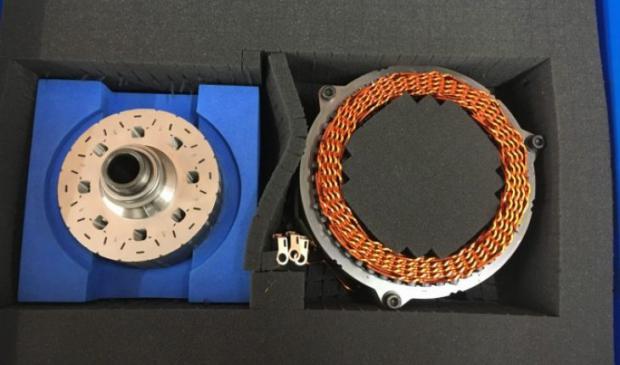
Breaking News
6.5x55 Swedish vs. 6.5 Creedmoor: The New 6.5mm Hotness
Best 7mm PRC Ammo: Hunting and Long-Distance Target Shooting
 Christmas Truce of 1914, World War I - For Sharing, For Peace
Christmas Truce of 1914, World War I - For Sharing, For Peace
Top Tech News
 EngineAI T800: Born to Disrupt! #EngineAI #robotics #newtechnology #newproduct
EngineAI T800: Born to Disrupt! #EngineAI #robotics #newtechnology #newproduct
 This Silicon Anode Breakthrough Could Mark A Turning Point For EV Batteries [Update]
This Silicon Anode Breakthrough Could Mark A Turning Point For EV Batteries [Update]
 Travel gadget promises to dry and iron your clothes – totally hands-free
Travel gadget promises to dry and iron your clothes – totally hands-free
 Perfect Aircrete, Kitchen Ingredients.
Perfect Aircrete, Kitchen Ingredients.
 Futuristic pixel-raising display lets you feel what's onscreen
Futuristic pixel-raising display lets you feel what's onscreen
 Cutting-Edge Facility Generates Pure Water and Hydrogen Fuel from Seawater for Mere Pennies
Cutting-Edge Facility Generates Pure Water and Hydrogen Fuel from Seawater for Mere Pennies
 This tiny dev board is packed with features for ambitious makers
This tiny dev board is packed with features for ambitious makers
 Scientists Discover Gel to Regrow Tooth Enamel
Scientists Discover Gel to Regrow Tooth Enamel
 Vitamin C and Dandelion Root Killing Cancer Cells -- as Former CDC Director Calls for COVID-19...
Vitamin C and Dandelion Root Killing Cancer Cells -- as Former CDC Director Calls for COVID-19...
 Galactic Brain: US firm plans space-based data centers, power grid to challenge China
Galactic Brain: US firm plans space-based data centers, power grid to challenge China
Toyota has reduced the rare earth materials used in electric vehicle magnets by 50%

Toyota has developed the world's first neodymium-reduced, heat-resistant magnet. Neodymium magnets are used in various types of motors such as the high-output motors found in electrified vehicles, use of which is expected to increase rapidly in the future. The new magnet uses significantly less neodymium, a rare-earth element ("rare earth"), and can be used in high-temperature conditions.
The newly developed magnet uses no terbium (Tb) or dysprosium (Dy), which are rare earths that are also categorized as critical materials necessary for highly heat-resistant neodymium magnets. A portion of the neodymium has been replaced with lanthanum (La) and cerium (Ce), which are low-cost rare earths, reducing the amount of neodymium used in the magnet.
Neodymium plays an important role in maintaining high coercivity (the ability to maintain magnetization) and heat resistance. Merely reducing the amount of neodymium and replacing it with lanthanum and cerium results in a decline in motor performance. Accordingly, Toyota adopted new technologies that suppress the deterioration of coercivity and heat resistance, even when neodymium is replaced with lanthanum and cerium, and developed a magnet that has equivalent levels of heat resistance as earlier neodymium magnets, while reducing the amount of neodymium used by up to 50 percent.
It is now possible to retain high coercivity at high temperatures through the reduction of the size of the magnet grains to one-tenth or less of those found in conventional neodymium magnets and the enlargement of the grain boundary area.
This new type of magnet is expected to be useful in expanding use of motors in various areas such as automobiles and robotics, as well as maintaining a balance between the supply and demand of valuable rare earth resources. Toyota will work to further enhance performance and evaluate application in products while accelerating the development of mass production technologies, with the aim of achieving early adoption in motors used for various applications, including in automobiles and robotics.
Development of elemental technologies for motors, inverters, batteries, and other components will require steady research and development in anticipation of the future. Toyota positions these technologies as essential for electrified vehicles and will continue making steady progress in each and every area, while working to build the foundation that will support the increased use of electrified vehicles in the future.
Background of Development of the Nd-reduced, Heat-resistant Magnet
* It is important that magnets used in automotive motors and other applications have high coercivity (the ability to maintain magnetization) even at high temperatures. For this reason, approximately 30 percent of the elements used in magnets are rare earths.
* When powerful neodymium magnets are used at high temperatures, such as for automotive applications, terbium and dysprosium are generally added to increase high-temperature coercivity. However, terbium and dysprosium are rare and expensive metals found in locations with high geopolitical risks. Because of this, considerable efforts have been made to develop magnets that do not use these metals, and positive results have been achieved.
* Production volumes of neodymium are relatively high among rare earths, but there are concerns that shortages will develop as electrified vehicles, including hybrid and battery electric vehicles, become increasingly popular in the future. Despite this, little effort has been made to address neodymium use.

 The State's Last Stand
The State's Last Stand


